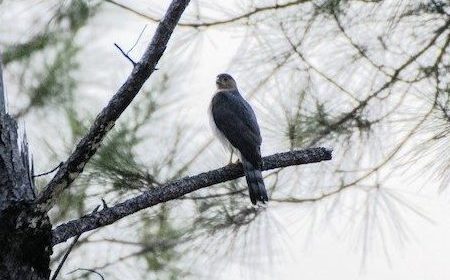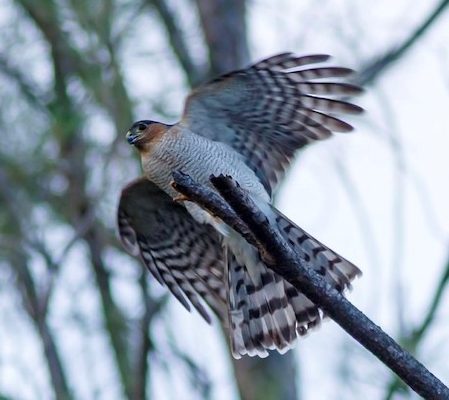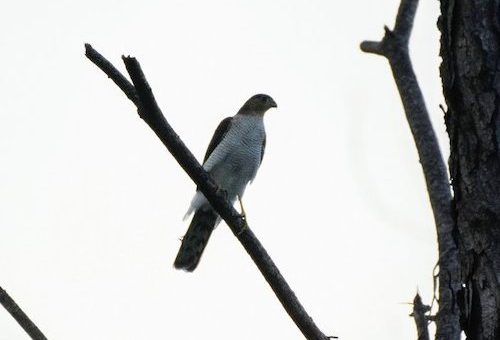Birdfinding.info ⇒ A rare and little-known form of Sharp-shinned Hawk. Most recent reports are unsubstantiated. Apparently the only publicly known location with recent confirmed records is Alejandro de Humboldt National Park in southeastern Cuba. The status of this form—potentially a separate species—has been largely overlooked by ornithologists and visiting birdwatchers.
“Cuban Sharp-shinned Hawk”
Accipiter striatus fringilloides
Endemic to Cuba; it appears to be on the brink of extinction. Its current range is not well known. May be confined to mountain forests at the far eastern end of the island, where its presence is attested by recent documented records from Alejandro de Humboldt National Park.
Apparently rare and declining. It might be more numerous and widely distributed than the available records show, but assessment of its status is complicated by the presence of significant numbers of “Northern Sharp-shinned Hawks” during much of the year (and potentially small numbers year-round, assuming that some winterers may fail to migrate off the island). Most reported sightings do not clearly distinguish between the two forms.
Identification
Adult has dark slate-gray upperparts, rufous cheeks and throat, and mostly white underparts with fine rusty bars.
Based on historically collected specimens, it is slightly smaller than the “Northern Sharp-shinned Hawk”, which occurs on Cuba as a migrant and winter visitor. In the few available photographs, “Cuban” appears proportionately long-tailed and small-headed.

“Cuban Sharp-shinned Hawk,” A. s. fringilloides. (Sendero El Recreo, Alejandro de Humboldt National Park, Guantánamo, Cuba; November 19, 2017.) © Jean-Sébastien Guénette

“Cuban Sharp-shinned Hawk,” A. s. fringilloides—note rufous cheeks and throat. (Sendero El Recreo, Alejandro de Humboldt National Park, Guantánamo, Cuba; November 19, 2017.) © Serge Déry
Immature plumages seem likely to follow the pattern of other pale, tropical accipiters in being mostly white below, with fine brown streaks and spots on the breast—not coarsely streaked, as in most immature “Northerns.”
Cf. “Northern Sharp-shinned Hawk”. Adult “Cuban” can be reliably distinguished from adult “Northern” by its combination of mostly whitish underparts with rufous cheeks. “Northern” is highly variable, including some individuals with very pale underparts, but such individuals typically also have pale cheeks.
Habitat should be a helpful indicator. Though its distribution and habits are not well known, the resident “Cuban” form is most likely to occur in and around extensive, mostly intact tracts of native forest, whereas migratory “Northerns” disperse across a wide range of habitats.
Notes
Monotypic form, one of four potentially distinct forms of Sharp-shinned Hawk. The possibility that it may qualify for recognition as a separate species seems to have eluded the attention of ornithologists.
IUCN has not evaluated its conservation status, but it would likely qualify as Critically Endangered.
References
eBird. 2018. eBird: An online database of bird distribution and abundance. Cornell Lab of Ornithology, Ithaca, N.Y. http://www.ebird.org. (Accessed September 25, 2018.)
Ferguson-Lees, J., and D.A. Christie. 2001. Raptors of the World. Houghton-Mifflin, Boston.
Garrido, O.H, and A. Kirkconnell. 2000. Field Guide to the Birds of Cuba. Cornell University Press, Ithaca, N.Y.
Raffaele, H., J. Wiley, O. Garrido, A. Keith, and J. Raffaele. 1998. A Guide to the Birds of the West Indies. Princeton University Press, Princeton, N.J.
